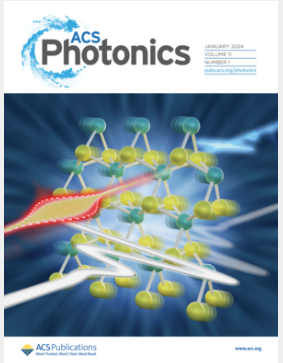Fate of Optical Excitons in FAPbI3 Nanocube Superlattices
IF 6.7
1区 物理与天体物理
Q1 MATERIALS SCIENCE, MULTIDISCIPLINARY
引用次数: 0
Abstract
Understanding the nature of the photoexcitation and ultrafast charge dynamics pathways in organic halide perovskite nanocubes and their aggregation into superlattices is key for potential applications as tunable light emitters, photon-harvesting materials, and light-amplification systems. In this work, we apply two-dimensional coherent electronic spectroscopy (2DES) to track in real time the formation of near-infrared optical excitons and their ultrafast relaxation in CH(NH2)2PbI3 nanocube superlattices. Our results unveil that the coherent ultrafast dynamics is limited by the combination of the inherent short exciton decay time (≃40 fs) and the dephasing due to the coupling with selective optical phonon modes at higher temperatures. On the picosecond time scale, we observe the progressive formation of long-lived localized trap states. The analysis of the temperature dependence of the excitonic intrinsic line width, as extracted by the antidiagonal components of the 2D spectra, unveils a dramatic change of the excitonic coherence time across the cubic to tetragonal structural transition. Our results offer a new way to control and enhance the ultrafast coherent dynamics of photocarrier generation in hybrid halide perovskite synthetic solids.

FAPbI3 纳米管超晶格中光激子的命运
了解有机卤化物过氧化物纳米立方体中光激发和超快电荷动力学途径的性质以及它们聚集成超晶格的过程,是潜在应用于可调光发射器、光子收集材料和光放大系统的关键。在这项工作中,我们应用二维相干电子能谱(2DES)来实时跟踪 CH(NH2)2PbI3 纳米管超晶格中近红外光激子的形成及其超快弛豫。我们的研究结果表明,相干超快动力学受限于激子固有的短衰减时间(≃40 fs)和在较高温度下与选择性光学声子模式耦合引起的去相干。在皮秒时间尺度上,我们观察到长寿命局部陷阱态的逐步形成。根据二维光谱的对角线成分提取的激子本征线宽的温度依赖性分析揭示了从立方到四方结构转变过程中激子相干时间的巨大变化。我们的研究结果为控制和增强混合卤化物包晶合成固体中光电载流子产生的超快相干动力学提供了一种新方法。
本文章由计算机程序翻译,如有差异,请以英文原文为准。
求助全文
约1分钟内获得全文
求助全文
来源期刊

ACS Photonics
NANOSCIENCE & NANOTECHNOLOGY-MATERIALS SCIENCE, MULTIDISCIPLINARY
CiteScore
11.90
自引率
5.70%
发文量
438
审稿时长
2.3 months
期刊介绍:
Published as soon as accepted and summarized in monthly issues, ACS Photonics will publish Research Articles, Letters, Perspectives, and Reviews, to encompass the full scope of published research in this field.
 求助内容:
求助内容: 应助结果提醒方式:
应助结果提醒方式:


